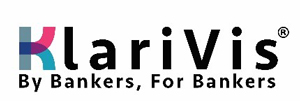By Mary Gill Hundley, Chief Administrative and Risk Officer, KlariVis
It is the age-old question: Buy vs. Build? How do you know which is the best strategy for your institution? As a former banker who has made the recent transition to a SaaS company executive, my answer today differs significantly from the one I would have provided five years ago. Today, I have a deeper understanding of the benefits, challenges, roadblocks and costs associated with building a data analytics solution. If data analytics is on your strategic roadmap, perhaps the insights shared here will aid you in making this significant decision for your institution.
Frustration with accessing bank data is not a new concept. For years, bankers have realized data is a significant untapped asset, but many institutions have not yet attempted to solve their data challenges.
Interest in data analytics continues to intensify and has only been amplified in the era of COVID-19, as it has become increasingly apparent that outdated methods of distributing reports and information do not work well in a remote work environment. Bankers seeking ease of access and speed of delivery are looking for innovative ways to procure information needed to make timely decisions or gain a competitive edge.
How will you solve the data conundrum? Some bank leaders are looking to their IT department to resolve data challenges. Alternatively, other executives are seeking out a fintech to partner for a solution. What is right for one institution may not fit with another’s strategy and business philosophy. A good place to start this decision journey is with a business case analysis that considers:
- What does the bank want to achieve?
- What does the bank board want to solve?
- Who are the users of the information?
- Who is currently creating reports, charts, and graphs in the institution today, and is this a siloed activity?
- What is the timeline for the project?
- How much will this initiative cost?
- How unique are the bank’s needs and issues to solve?
Assessing how much time is spent on meaningful report creation and whether that task is the best use of a specific employee’s time is critical to the evaluation. In many cases, highly compensated individuals spend many hours creating reports and dashboards, leaving them with little time for analyzing and acting upon information derived from the reports. In institutions where reporting is accomplished in a siloed fashion within multiple departments and business units, seeking a single source of truth is often a primary motivator for expanding data capabilities.
Pros for buying a software tool:
- Prebuilt tools typically promote a faster time to deployment, yielding quicker readiness for use in the bank’s data strategy.
- Vendors employ specialized technical resources that eliminate internal turnover risk prevalent with “in house” development.
- Buying frees up resources so the internal team can focus on the data use strategy and analyzing data once the tool is implemented. It frees up the “gray space.”
- There is a lower upfront cost, which is typically less than the cost to hire developers and divert internal managements focus towards development.
- There is minimal ongoing system administration with a purchased solution that is delivered in the cloud.
- Vendors leverage expertise from the feedback of institutions of all sizes and complexities, which will benefit all clients.
- Utilization of cloud technology used by many providers is faster, cheaper and secure.
- The vendor is responsible for solving any integration issues.
- Purchased software is updated regularly with ongoing maintenance, functionality and new features to remain competitive.
- Purchased solutions typically promote accessibility throughout the institution, allowing for a broad user base and adoption.
Cons for Buying:
- Selection criteria are critical, and it can be time-consuming to find the right vendor to meet your specific needs. For example, many banks are seeking an out-of-the-box solution that does not depend on internal bank resources to maintain or enhance.
- You have limited customization options.
- You have potential for integration issues if the right vendor is not selected.
- Subscriptions and licenses are often time-based, so costs may grow over time.
- Subscriptions and licenses are sometimes user-based, so adoption across the institution becomes more costly and could lessen the overall effectiveness of the solution.
Pros for Building:
- You have the ability to customize and prioritize development efforts based on the bank’s specific needs.
- Data security may be controlled, depending on the tools used for the build and data warehousing.
- You can modify the budget more readily.
Cons for Building:
- Software development is not your core business.
- There are significant upfront and ongoing costs to develop. Institutions often underestimate the time and resources needed for development, which results in a longer time to deployment. A purchased tool may have what appears to be a large price tag, but building a tool incurs costs that are often overlooked, such as the cost of internal personnel subject matter experts to guide development efforts, ongoing maintenance costs and the unknowns associated with software development.
- The project requires business intelligence and software development expertise, neither of which are prevalent in the banking industry.
- There is turnover risk associated with subject matter experts, data analysts or developers. Institutional knowledge related to the “in-house” built system may leave the bank with the employee.
- Projects of this magnitude require continuous engagement from management subject matter experts, as this is not solely a technology team project. Bankers are needed to provide the vision and banking content for the product, and success is contingent on “in-house” commitment. This is one of the most expensive undertakings because it diverts management focus from other responsibilities to the development project.
- There is a negative impact on company productivity. Participant resources will be diverted from core responsibilities to develop the tool.
- “In-house” created tools tend to continue to operate in data silos where the tool is accessible only to the data team.
- Ongoing development and releases may be difficult for an internal team to manage to meet the evolving needs of the bank. Teams are often challenged with limited time and resources, along with changing business priorities and staff turnover.
The question that remains is, do you have the bandwidth and talent at your bank to take on a build project? These projects typically take longer than expected, experience budget overruns, and often do not result in the desired business result. However, you need to make the choice that is correct for your institution.
Mary “Gill” Hundley, CRCM, CRVPM
Gill Hundley is the chief administrative and risk officer of Roanoke, Virginia-based KlariVis, a data analytics platform designed by bankers for bankers. KlariVis provides a clear vision by automatically integrating, aggregating and analyzing transformative data in an understandable format. Hundley leads the administrative and risk functions at KlariVis. Reprinted with permission, BankDirector.com
This story appears in Issue 3 2020 of The Community Banker Magazine.









